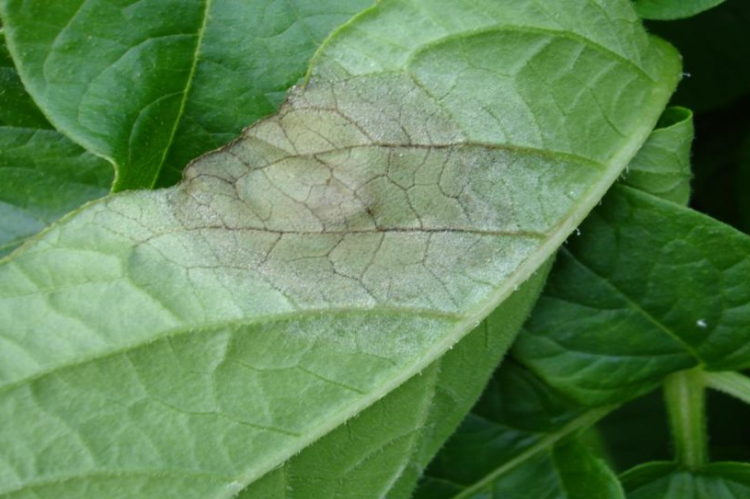Managing potato blight, May 2019
2 May 2019It’s very difficult at this stage of the season to accurately predict how bad overall 2019 will be for blight. Will it be similar to 2018 or will there be a large number of outbreaks? The number of confirmed blight outbreaks in Scotland per year (AHDB Fight against Blight data) is a good indication of annual risk. Interestingly, the last year there were as few confirmed outbreaks as in 2018 (10 outbreaks) was 2013. 2013 wasn’t followed by a second low-risk year; in fact the number of outbreaks was very high in 2014, at 99. The data for the past 10 years suggest no obvious link between the number of outbreaks one year and the next. It’s important to bear in mind that the current very aggressive genotypes of Phytophthora infestans can multiply very quickly from an initially low level of inoculum, given favourable weather conditions of course.
Check the AHDB Potatoes Fight against Blight website regularly for the most up to date information on the first and subsequent appearances of confirmed blight outbreaks. Also, check BlightWatch or BlightCAST for the general blight-weather risk where your crops are located.
Fungicide resistance management
A key take-home message from recent years is that much more emphasis needs to be placed on managing the threat of fungicide insensitivity. Greater attention needs to be paid to fungicide modes of action (MoA) (identified by FRAC Codes) when choosing products for programmes. This requires advanced planning of programmes.
Avoid prolonged selection pressure from any one fungicide mode of action (MoA) by ringing the changes in terms of FRAC Codes throughout the fungicide programme.
The key principles of fungicide resistance management are established. For example: alternate different MoA and use mixtures of different FRAC Codes. Also comply with product label restrictions on the total number of applications per crop. Given the current state of knowledge we advise single (one and one) alternation, not blocks. These principles need to be put into practice.
Blight control early in the growing season
Bear in mind that plant resistance is lowest when the plants are small (low single-digit number of leaves per stem). Resistance increases with growth stage because upper leaves are more resistant.
Protection during rapid canopy
Protecting crops against blight during rapid canopy development is more difficult if 1) crops are planted late and 2) temperatures are high during this phase of growth, because the particularly rapid growth of the haulm stretches fungicide protection.
Fungicide application timing
For the fungicidal control of blight the timing of application in relation to high-risk weather is very important. Fungicides give better protection if they are applied a day before a high-risk period. Curative fungicides prevent more early infections from developing into lesions if applied shortly after a high–risk period. If the scheduled spray day is on the first or second day of a high-risk period, or the day after, then it’s essential to use a fungicide with curative activity.
Protectant fungicides are not curative. Curative fungicides are either translaminar or systemic and consequently they are redistributed and therefore help boost coverage and protection of the foliage.
Preventing blight spreading from outgrade piles
As is the case every year, it is important to deal with any potential sources of primary inoculum of potato blight. This will reduce the risk of crop infection and allow each fungicide application to be more effective. Control with fungicides is easier, and less expensive, if the amount of inoculum challenging the crop is less.
Best practice with outgrade piles is to prevent any haulm growth, i.e. there should be zero tolerance of green haulm. This is best achieved by covering the pile with black polythene before any tubers have sprouted. The polythene should be examined regularly to ensure that it remains in place and intact.
Glyphosate sprays can be used to kill off any haulm that has already grown but such treatments may be too slow acting to prevent the spread of blight from the outgrade pile. In addition, repeat applications will most probably be required to deal with successive emergence of plants from tubers at different depths in the pile. Diquat will kill treated haulm much faster than glyphosate and therefore will more rapidly reduce the spread of blight from an infected outgrade pile.
Further information is available at www.potato.org.uk/outgradepiles
Sign up to the FAS newsletter
Receive updates on news, events and publications from Scotland’s Farm Advisory Service

